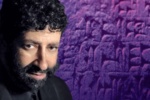¿Tú hablas español? You might want to start learning Spanish now–because Hispanic churches are growing faster than ever in the United States.
They come from every country in Central and South America. They are changing the U.S. social, political and spiritual landscapes. Numbering almost 40 million, Hispanics are the fastest-growing ethnic group in America today and in January became the nation’s largest minority group, according to the Census Bureau. An estimated 9 million of them are evangelical. Of that number, close to 70 percent are Pentecostal.
They carry seeds of Christian revival from their countries that could turn the U.S. Anglo church upside down. And many of them say Anglo believers desperately need a spiritual transplant of their passion for Jesus and personal evangelism.
“I see a revival coming from south of the border,” says Jesse Miranda, professor at Vanguard University in Costa Mesa, California, and director of the school’s Center for Urban Studies and Hispanic Leadership.
No longer hidden in storefront missions on the “wrong” side of town, Hispanic churches are blossoming into megaministries that are bursting at the seams.
“We need larger facilities. We don’t fit,” says Daniel de León, pastor of Templo Calvario Assembly of God in Santa Ana, California. With 6,000 members, it is the largest Hispanic church in America. Twenty-six years ago 60 people attended his church.
Crossing Borders
Iglesia de Restauración Elim, an independent Pentecostal church in Los Angeles, began with three members in 1986 and now has 4,200 members. “They mostly came from the Catholic Church,” says René Molina, pastor. “They are tired of tradition. They want to have a real relationship with Jesus. They want to have His love in every part of their lives.”
Although most Hispanics live in urban centers, hordes are pouring into even the unlikeliest of rural towns. Mabel Nieto, a Mexican-American, planted Fuente de Vida (affiliated with the Assemblies of God) in Perry, Iowa, a small farming community near Des Moines. She is targeting 2,000 Hispanics from Mexico and Central America who work in a local pork-processing plant.
The immigrants arrive in the area with their families or alone. Transient workers stay for six months and leave by winter. Nieto reports many conversions among this group.
One couple she ministered to accepted Christ after having lived together for 20 years and agreed to marry. “They are a strong testimony to other couples,” says Nieto, who is single.
Her church has grown from five people in 1998 to 50 stable believers today. Families are being won to Christ through children’s crusades, a health clinic and English classes.
One family sent two boys to the church after the boys accepted Christ in children’s church. Their mother came to Christ soon afterward. Six months later, their father was converted when he reluctantly attended a special service featuring a mariachi band. The family has planted a new home-church where almost 35 people attend on Saturdays.
“There has been an awakening among these people,” Nieto says. “They are witnessing on the job, and young people feel a need to preach.”
Elsewhere, across the country, relatively young leaders who carry influence with the Hispanic church nationally are assuming more visible ministry roles.
Marcos Witt, 40, a popular worship leader and teacher throughout Latin America, recently joined the 30,000-member Lakewood Church in Houston as pastor of the Hispanic congregation. He had no intention of switching careers, but he accepted Lakewood pastor Joel Osteen’s invitation to come on staff when it was offered to him out of the blue during a Houston Astros baseball game.
“It was one of those God things,” Witt says of the moment.
More than 3,000 people attend Witt’s Spanish service, which results in as many as 55 conversions every week. He intends for his congregation to become the largest Hispanic church in North America.
“I want to encourage Hispanics in the United States to live a life of victory,” he says, explaining that he desires to break the victim mentality many Hispanics carry from having lived in conquered nations. “I speak consistently against that as God…shows them unconditional love,” he says. “I’m looking forward to breaking that mentality.”
Witt owns the CanZion Group, which produces praise-and-worship music and leadership materials. He sees Latin Christians bringing a fresh flow of the Holy Spirit to the United States, carrying it from explosive revivals in Central and South America.
“We’re having an awakening [in America] that could lead to revival,” he believes.
Marco Barrientos, 39, is another young leader making his mark. He moved to the United States from Mexico four years ago to form an alliance with Christ for the Nations in Dallas.
Working through the ministry Amistad Cristiana Internacional, he encourages Hispanic pastors in their faith by holding citywide conferences called Aliento del Cielo (“Breath of Heaven”).
“Most Hispanic pastors must work in a secular job,” he says. “They are exhausted, overworked, isolated and need a sense of community.”
Raised a Roman Catholic in Mexico, Barrientos became a born-again Christian while attending a Bible study in the home of a dentist who now pastors a church with thousands of members. Barrientos says the Catholic Church in Mexico is irrelevant and unable to meet spiritual needs, in part because it is more concerned with politics.
He portrays the Hispanic church as being representative of many subcultures. For example, Mexico derives its culture from Spanish and Indian traditions. Generally, the people are reserved.
Hispanics from Caribbean nations such as Puerto Rico and the Dominican Republic represent a mixture of African and Spanish influences and are more outgoing. Other countries in Central and South America convey a mixture of Spanish and Indian cultures. Yet Argentina borrows traditions from Europe, mainly Germany and Russia.
Worship-music styles differ too. They can reflect salsa, which has a rhythmic African beat; merengue, a more lively rhythm with percussive instruments; or mariachi, with its country-music flavor.
Eyeing the Future
The Hispanic church is experiencing a steamroller shift that’s flattening the old order of tightly controlled, small, legalistic congregations. “There is a big-time tension going on,” says David Greco, president of Open Heavens Ministries in Butler, New Jersey. “It’s not only a conflict of style, but church government too.”
In the past, ministers stressed uniformity and rigid control over their flocks. They demanded blind obedience. This philosophy originated with the influence of Spanish and French feudalism and from living under iron-fisted dictators, Greco claims.
Church leaders ranked holiness and spirituality by outward appearance. Women could not have short hair or wear earrings or slacks. Lively worship teams and home cell-groups still are eyed with suspicion as being factors that can dilute church authority.
However, today’s growing soul-winning churches have cast off the old model. Leaders are laboring in the Holy Spirit and evangelizing with passion.
Frank Almonte, 44, took over as senior pastor of Adonai Christian Center, in Corona (Queens), New York, in 1988. He had 60 members. Church elders opposed his new ideas about cell groups and discarding the constraints of legalism. “They wanted to throw me out,” he says.
Membership in the independent Pentecostal church has zoomed to 1,900, and four services are held on Sunday.
“A lot of people are getting saved,” Almonte says. “God is opening the eyes of the Hispanic people. Something is going on. I can’t explain it. Most are coming from the Catholic Church. They want to hear Jesus.”
The local police precinct has even blessed Almonte’s aggressive street evangelism. “They see bad people getting saved,” he says.
Orlando, Florida, is home to more than 70 Hispanic churches. Iglesia El Calvario (Assemblies of God) is the largest, with 2,300 members from 14 countries. “Growth has been phenomenal,” says Saturnino González, senior pastor. “Every Sunday we always preach a message of salvation. There are 30 to 40 decisions for Christ in every service.”
The church’s praise and worship incorporates the music styles of different cultures, such as salsa and merengue.
In Chicago, Wilfredo De Jesús ministers to the poor and disadvantaged. In two years his New Life Covenant Church (Assemblies of God) has exploded from 125 members to almost 900. The church operates shelters for homeless men, women and children, and recently opened New Life for Women–a ministry to ex-prostitutes and drug addicts–on a 15-acre farm.
Evangelical Hispanic clergy from 27 denominations are launching a nationwide church-growth effort through Alianza de Ministerios Evangélicos Nacionales (AMEN), reports Jesse Miranda, president. The Billy Graham Evangelistic Association, Focus on the Family, Promise Keepers, the American Bible Society and the Salvation Army all support AMEN.
“We have three initiatives,” Miranda reports. “They are, establish 1,000 interdenominational prayer groups, promote unity, and plant 3,000 new churches and 500 new compassion ministries in five years.”
The ambitious schedule was unveiled at Cumbre 2002, a recent gathering of 5,000 Hispanic pastors and leaders in Anaheim, California.
Miranda is educating Hispanic pastors to assume leadership roles in their communities through a new master’s degree program at Vanguard University.
“Forty-two pastors are studying Christian leadership, with an emphasis on social transformation,” he says. “We want to show them how to assess needs and start programs like immigration counseling. Need draws people to the Lord.”
The Hispanic church is entering the new millennium with new power and organization to change America. However, some observers say a lack of education among pastors is missing.
“I believe that Hispanics are dedicated to evangelism, but we have failed to educate our youth so they could be more effective ministers,” says Sal Sabino, pastor of Heavenly Vision Christian Center in Bronx, New York. “If we could combine that, we would have a bomb.
“I see the Spanish church is like David,” Sabino adds. “No weapons. He doesn’t have the proper training. But David is coming to the big Goliath. I see Hispanic ministries outgrowing even English-speaking ministries in this country because of the Hispanic population.”
Statistics show that Spanish-speaking churches in America are experiencing record-breaking growth.
Most Hispanic Christians in the United States attend independent Spanish churches. Still, statistics show that among the country’s largest U.S. Pentecostal denominations, the ranks of Hispanic believers are swelling.
The Assemblies of God (AG), based in Springfield, Missouri, has the largest
Hispanic Pentecostal population, with 367,857 members attending 1,918 Spanish-speaking churches. Since 1990, Hispanic churches in the AG have increased by 29 percent and the number of adherents has grown by 53 percent.
The Church of God (COG) in Cleveland, Tennessee, has 728 Hispanic churches, with about 60,000 members. From 2000-2002, 45 percent of new churches in the COG were Hispanic.
The International Church of the Foursquare Gospel, based in Los Angeles, reports 180 Spanish-speaking congregations with a total membership of 10,000.
The Southern Baptist Convention (SBC), though not Pentecostal, had 2,195 Latino congregations with 133,017 members in 2000, compared with 1,839 congregations and 113,589 members in 1996. In 2001 the SBC started 313 new Spanish-speaking churches. Its church-planting effort is conducted under the Hay Vida en Jesús (“There’s Life in Jesus”) theme of the National Fellowship of
Hispanic Southern Baptist Churches.
At Georgetown University in Washington, D.C., the Center for Applied Research in the Apostolate (CARA) reports that between 18 percent and 20 percent of adult Catholics say they are Hispanic. In another poll, 56 percent of adult Hispanics claim to be Catholic. Estimates of the U.S. Hispanic population in the Catholic Church range from 15 million to more than 20 million.
There is some evidence that Hispanics are leaving the Catholic Church, a CARA spokesperson told Charisma. A segment of Hispanic Catholics also attends evangelical-style services. Barna Research Group of Ventura, California, confirms this decline.
“As recently as one decade ago, two-thirds [68 percent] of all Hispanic adults said the church they attended most frequently was Catholic; today that proportion is down to just half [53 percent],” the research organization reports.
Father Virgilio Elizondo, a fellow with the Institute of Latino Studies at the University of Notre Dame and the founder of the Mexican American Cultural Center in San Antonio, reports that the Spain-based Cursillo movement opened the door for a spiritual awakening among Hispanic Catholics in the 1940s. He notes that the movement was a forerunner to the move of the Holy Spirit in the Catholic Church.
“It stressed prayer, singing, personal testimonies and got people involved in an active way,” he says.
According to Elizondo, Hispanics are not fleeing the Catholic Church in any greater numbers than Anglos are.
“Spanish-speaking Catholic churches are jam-packed,” he says. “People are searching.”
Former drug dealer Sal Sabino started a church in 1990 that has grown to 1,200 people.
Heavenly Vision Christian Center in Bronx, New York, is a miracle. It was founded in 1990 by Sal Sabino and had only eight members. Today the independent Pentecostal church needs five services to accommodate its 1,200 members.
Sabino pastors the congregation with his wife, Kenia, and a staff of 12. The church, located in a former supermarket, will move this year to a new $5 million building that can accommodate 3,000 worshipers. By faith Sabino is believing God for 12,000 members.
Sabino himself is another miracle. He emigrated from the Dominican Republic in
1970. While serving 4-1/2 years in prison for drug dealing, he accepted Jesus as his Savior in his jail cell in 1985.
After devouring the Bible for two weeks, he felt the glory of God flooding his cell one morning before dawn. He says God challenged him to preach.
“From then on I’ve not taken one step back,” Sabino says. “I’ve been serving the Lord.”
After his release from prison, he started street-preaching, then moved to a Baptist church that had some space available.
“We mainly grew out of cell groups and street evangelism,” he says.
His church now has 300 home groups of six to 12 people in each that meet in apartments and houses in Bronx and Manhattan.
“The cell-group ministry brings the church to the people,” he says. “We are taking Jesus to the people.”
Máximo Guzmán, 26, a staff member of the church, became a Christian in 1998 when a young woman invited him to a home-church meeting. As the leader of a 200-member street gang, he sold drugs and fought with knives and guns. Friends question how he changed so radically.
“It wasn’t me, man,” he tells them. “It was Jesus. He is mighty. He’s my Lord and Savior.”
Sabino describes a poignant picture that he believes contrasts the Anglo and Hispanic churches in the United States.
“I see the English-speaking church as a man with a big head but with little legs,” he says. The big head means theology and education, and little legs symbolize a lack of evangelism, he explains.
“I see the Hispanic church as a man with a little head and long legs,” he adds, saying that the Spanish church is short on theology and education but long on evangelism.
Sabino concludes: “We want a church that looks like a normal man.”
America’s 12 Largest Hispanic Churches
Templo Calvario (Assemblies of God)
Santa Ana, California; 6,000 members
Daniel de León, pastor
Iglesia de Restauración Elim;
Los Angeles; 4,200 members;
René Molina, pastor
La Iglesia en el Camino (International Church of the Foursquare Gospel)
Van Nuys, California; 3,000 members
Jaime Tolle, pastor
Templo el Rey Jesús;
Miami; 3,000 members;
Guillermo Maldonado, pastor
Hispanic Lakewood;
Houston; 3,000 members;
Marcos Witt, pastor
Iglesia el Calvario (Assemblies of God)
Orlando, Florida;
2,300 members;
Saturnino González, pastor
La Catedral del Pueblo;
Miami; 2,000 members;
Yolanda Edén, pastor
Adonai Christian Center;
Corona, New York; 1,900 members;
Frank Almonte, pastor
Jesucristo el Todopoderoso;
Hialeah, Florida; 1,500 members;
Oscar Agüero, pastor
Heavenly Vision Christian Center
Bronx, New York; 1,200 members;
Sal and Kenia Sabino, pastors
Iglesia Evangélica Latina Templo Betel (Assemblies of God)
Los Angeles; 1,000 members;
Moisés Sandoval, pastor
Iglesia de Dios (Church of God; Cleveland, Tennessee);
Nashville, Tennessee; 1,000 members;
Jose Rodríguez, pastor
Peter K. Johnson, a freelance writer based in New Jersey, is a frequent contributor to Charisma.






Leave a Comment
You must be logged in to post a comment.